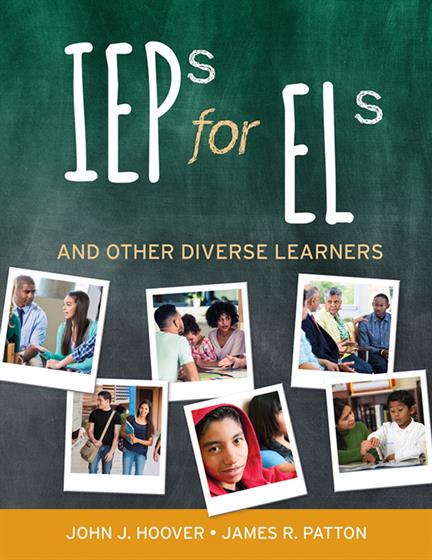Acknowledgments
About the Authors
About the Contributors
Introduction: Blueprint of IEPs for ELs and Other Diverse Learners
Underlying Assumptions of the IEP Development Stage
Topical Areas and Terminology
Chapter 1: Understanding a Culturally and Linguistically Diverse Multi-Tiered System of Supports
Practitioner’s Perspective
Overview of MTSS
MTSS and Cultural and Linguistic Diversity
Culturally and Linguistically Responsive Teaching Qualities
What Makes an IEP Culturally and Linguistically Responsive?
Educational Framework for Diverse Learners With Disabilities
IEP Development Principles for English Language and Other Diverse Learners
Conclusion
Chapter 2: Essential Components of IEPs for English Language and Other Diverse Learners
Practitioner’s Perspective
Required Components of IEPs per IDEA
Other Mandated IEP Considerations per IDEA
IEP Team: Essential Members for Diversity
Conclusion
Chapter 3: Role and Function of Academic Language in IEPs
Practitioner’s Perspective
Academic Language Historical Perspective
Academic Language Processes
Inclusion of Academic Language Proficiency in IEP Development
Conclusion
Websites
Chapter 4: Culturally and Linguistically Responsive Present Levels of Academic Achievement and Functional Performance: Determining Accurate Levels and Developing Meaningful Statements
Practitioner’s Perspective
What Are PLAAFP and Why Are They Important?
Creating Meaningful PLAAFP Statements Using the CRISEN Principles
Examples of Meaningful and Instructionally Relevant PLAAFP Statements
Developing Responsive and Defensible PLAAFP
Conclusion
Chapter 5: IEPs and the Development of Measurable Annual Goals Using SMART Principles
Practitioner’s Perspective
Introductory Considerations
What Is a SMART Goal?
Examples of SMART Goals
Developing SMART Goals
Making SMART Goals Culturally and Linguistically Responsive
Conclusion
Chapter 6: Delivering Appropriate IEP Services
Practitioner’s Perspective
English Language Development and IEP Implementation
Addressing Language and Content During Instruction for English Learners
Implementing the IEP
Conclusion
Chapter 7: Special Considerations and Diversity
Practitioner’s Perspective
Supplemental Aids/Services for Diverse Learners
Accommodations and Modifications
Assistive Technology and Services
Functional Behavioral Assessment and Behavioral Intervention Plans
High Stakes Assessment, Diversity, and IEPs
Conclusion
BIP-3: Functional Behavioral Assessment (Sample)
BIP-3: Behavioral Intervention Plan (Sample)
Chapter 8: IEP Progress Monitoring and Diverse Needs
Practitioner’s Perspective
Progress Monitoring Defined and Overview
Culturally Responsive Monitoring Competencies
Progress-Monitoring Practices
Progress-Monitoring Interpretation for Diverse Learners: Special Considerations
Conclusion
Chapter 9: Culturally and Linguistically Responsive Transition Planning and Services
Practitioner’s Perspective
Successful Adult Functioning
Basic Concepts Associated With Transition Planning and Services
Transition Planning for Culturally and Linguistically Diverse Students
Conclusion
Chapter 10: Guidelines for Successful IEP Meetings for Diverse Learners
Practitioner’s Perspective
Importance of Funds of Knowledge in Education
Pre-Meeting Suggestions
During–IEP Meeting Suggestions
Post-Meeting Suggestions
Conclusion
Chapter 11: Putting the IEP Pieces Together
Summary of IEP Skill Sets for English Language and Other Diverse Learners
The Integrated IEP for Diverse Learners
Conclusion
Appendix
Commercially Available Instruments for Determining Present Levels of Performance
Elementary Individualized Education Program (Sample)
Secondary Individualized Education Program (Sample)
References
Index




